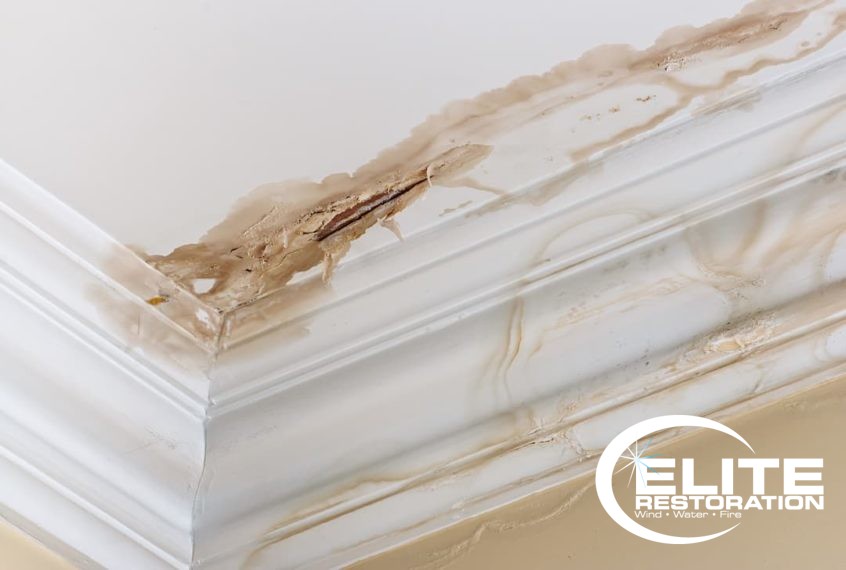How to Tell if Water Damage is Old or New

Water damage is a scary pair of words to most homeowners and quick action is needed, but first, it is vital to figure out if the water damage is new or old. Knowing how long the problem has been taking place can help give clues about serious of a problem you’re facing. Problems that have been happening over a shorter period are often (but not always) easier to repair.
House History and Recognizing Signs
Unless your home is brand new, chances are different pipes, water systems, and other various things in your house are all different ages. Older things are more susceptible to breakage and damage. This means you should pay extra attention to areas of your house that are older or beneath older areas. Being aware of the challenging areas of your house can help you catch leaks early. It is also helpful to know the materials your house is made of because water affects different types of materials in different ways. For instance, if your home contains tile, brick, or other hard materials and they’re showing signs of water damage, chances are the damage is months old. It takes longer for damage to appear on these materials and create leaks. Conversely, if you notice damage on drywall, wooden floors, or carpet, it’s more difficult to tell if it’s new or old. Even the slightest amount of water can impact these materials immediately.
Visual Cues
The age of water damage can be estimated the same way people figure out the age of trees: by the rings. Newer spots will be one dark spot, but older water damage spots will begin to develop rings. The older the spot, the more rings it will have. If there are a lot of rings, it is most likely a problem that has been developing for a while.
Second, since bacteria takes time to colonize, if you see mold, that means the water has been there for at least a few days. Mold will usually appear as small black or gray specs on your ceiling, walls, or floors. If the mold has spread beyond where the water damage is directly visible, it can hint water damage that has been building up for a while.
Finally, if you notice decay, this means that your house has been exposed to consistent standing water over a lengthy period of time. Typically, decay only happens in extreme situations such as flooding. If you notice your house decaying, it is time to take immediate action.
Tactile Cues
You can also determine how old the damage is by touching the water spot. It is best to wear a mask and gloves when doing this in case there is mold present. Gently press on the spot. New water damage will not have had time to weaken the drywall or other material, so while it will feel wet, it will still feel hard. Older water damage spots will feel squishy, and you will be able to move it without much pressure or force.

